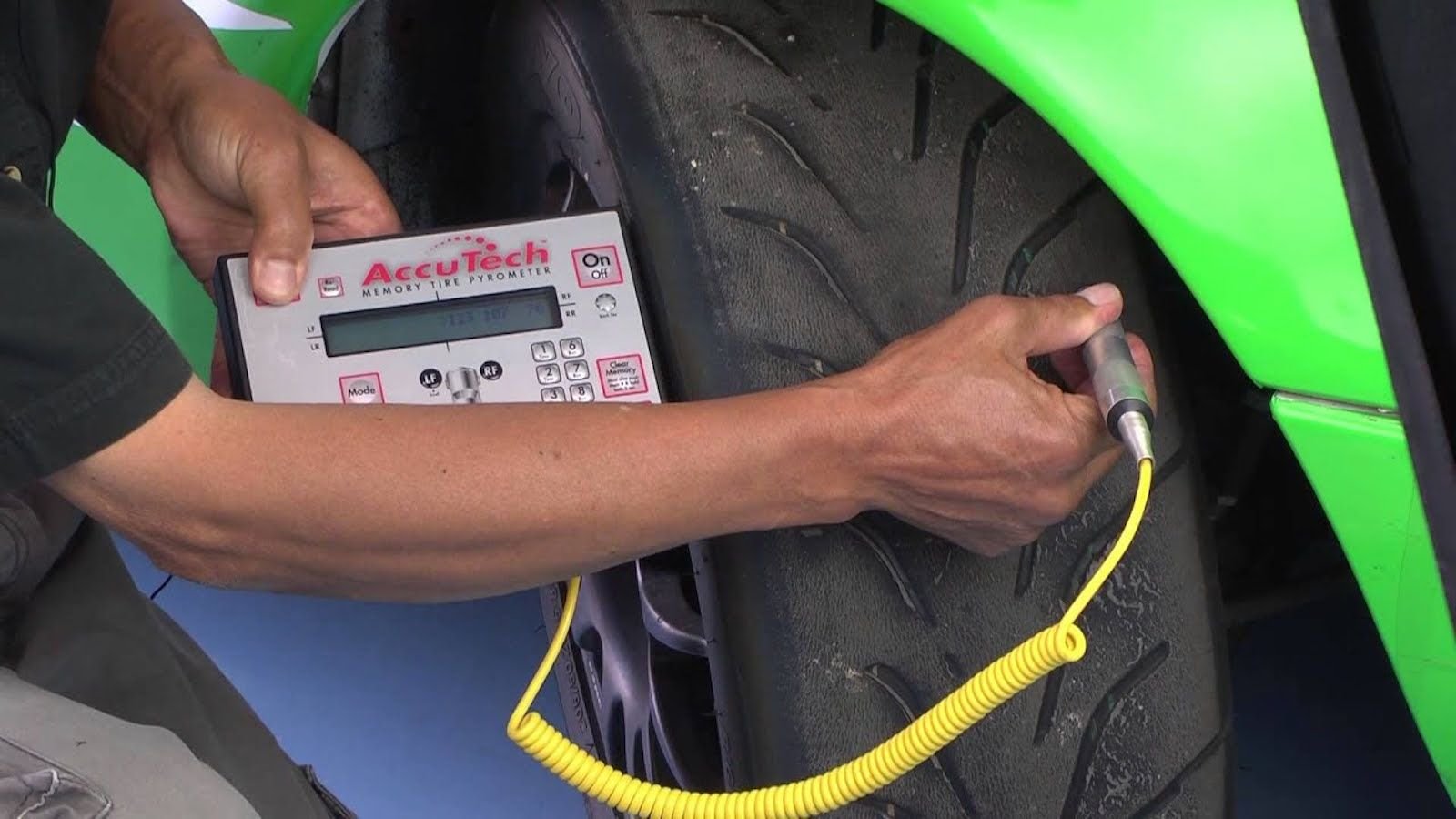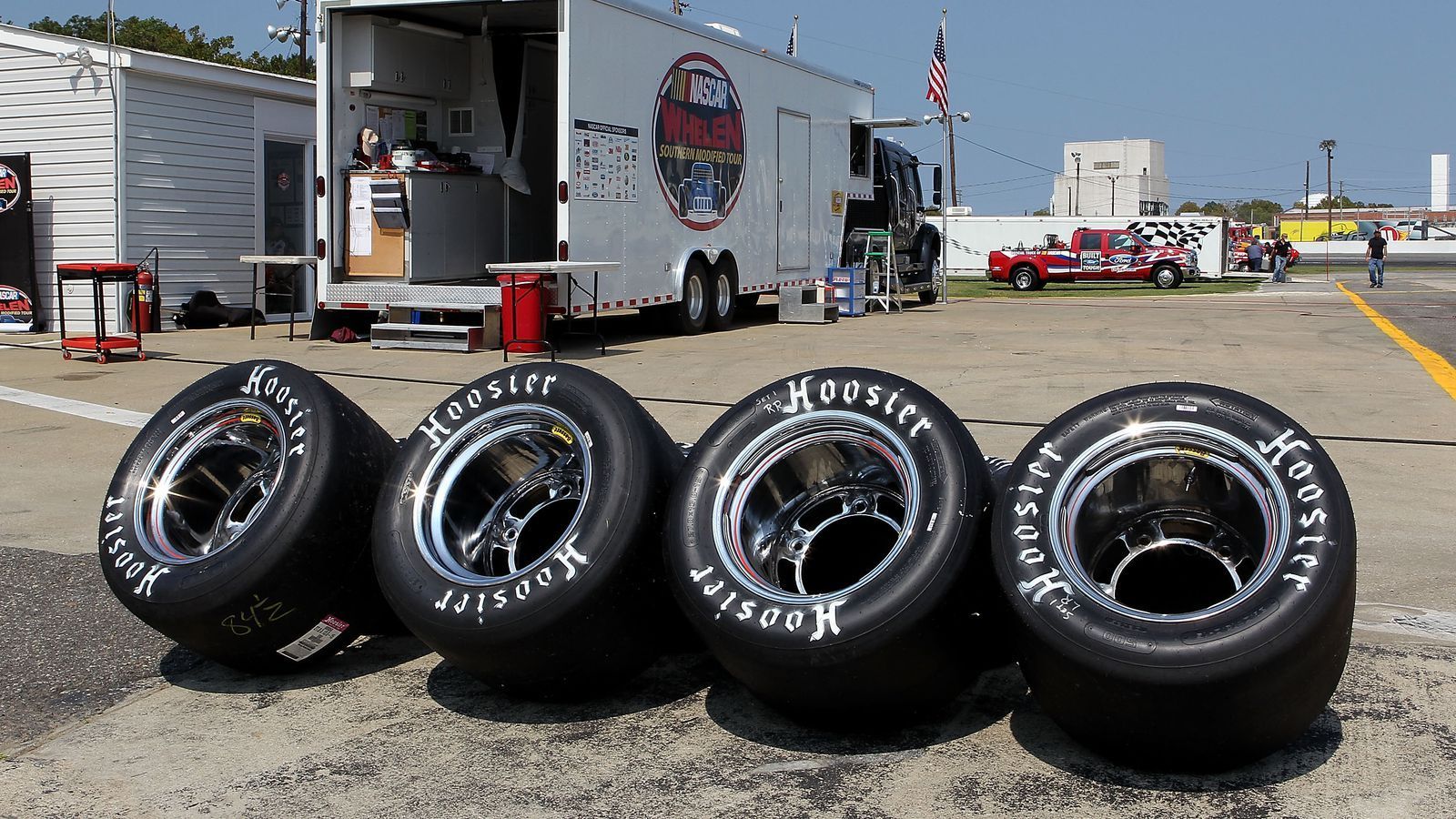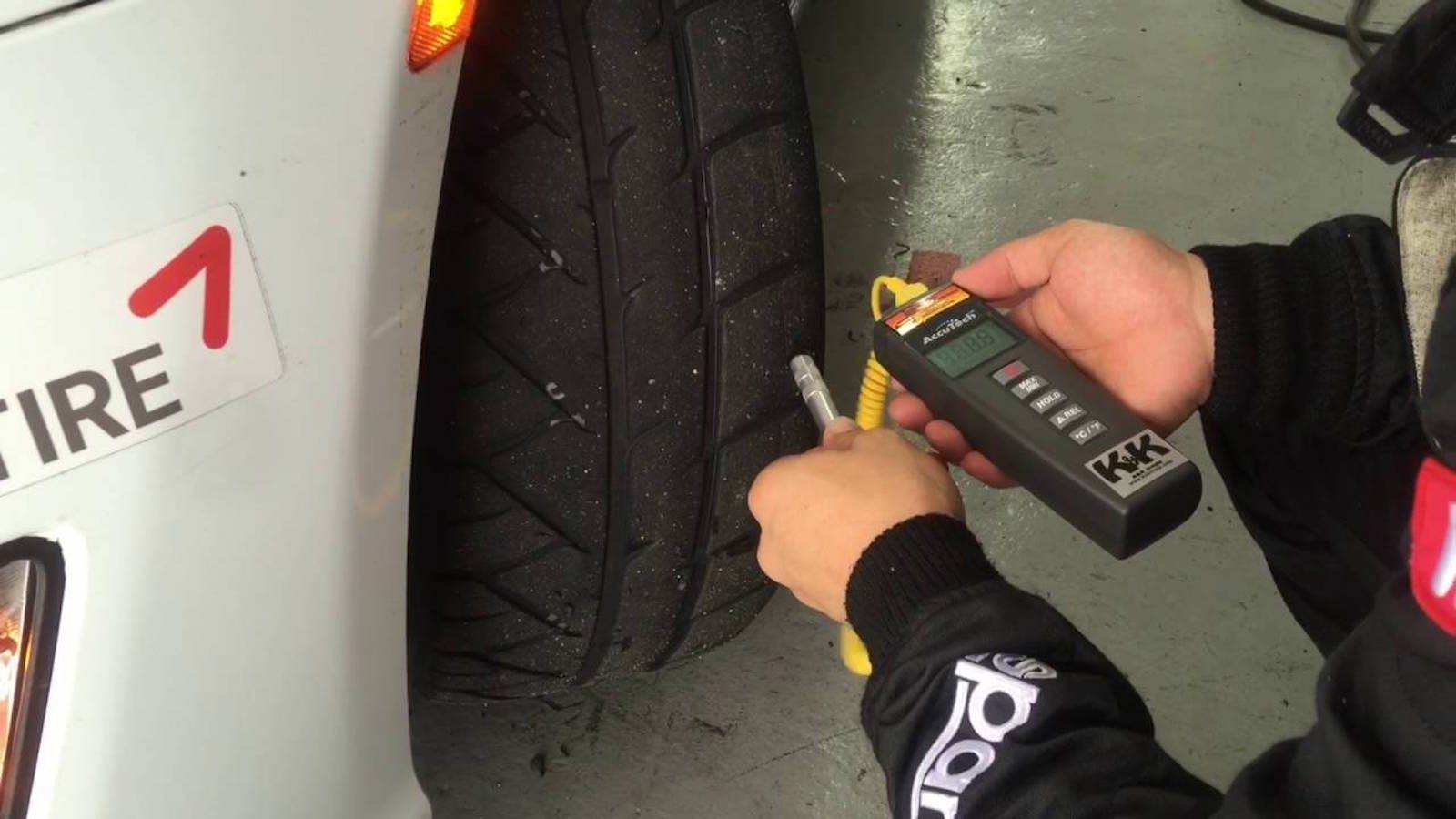Using a Tire Pyrometer
Tire temperatures are the heart of everything on a race car, so without further ado…












Triple Threat
When you think of tires, you probably think of one big piece of rubber that wraps around each of the four wheels on your car, but there's a lot more going on. Rather than thinking of it as one big piece, we typically talk about tires in thirds: the outside, middle and inner portions. In order to measure each of them, we are going to need a tool: a tire pyrometer.
Image courtesy of Youtube
Infrared vs. Probe Type
If you’ve ever been to a race, you might have seen a fellow driver buzzing around their car with an infrared pyrometer. These should be avoided at all costs. Seriously, logging tire temperature begins with selecting the correct equipment, which means using a “probe type” pyrometer. These specialty tools get their name from a tip that is literally designed to be pressed into the surface of the rubber. What this translates to is more accurate data that stays more consistent when compared to a laser type gun that most enthusiasts use. However, buying the correct tool is only part of logging good data. Now you need to know how to use it.
>>Join the conversation about using a pyrometer right here in Dodge Forum.
How it’s Done
Driving off of the track and into the pits, tire temperatures need to be recorded quickly in order to ensure the proper values are noted. Remember that everything begins to cool the moment you slow down, so you don’t want to waste any time getting held up by traffic, letting the brakes cool down or sitting around and chatting about how the car felt. Have someone in the pits who is ready to get these numbers the second you stop. And remember, it will help if you turn the steering wheel for them to get better access to the inside of the tires—fender to tire clearances can easily cut up your hands if you're not careful.
Image courtesy of Flickr.com
>>Join the conversation about using a pyrometer right here in Dodge Forum.
Repeat it Exactly
Whatever order you initially took temperatures is the way you need to take them every time. Because the tires are cooling, it’s going to give you inaccurate numbers if you suddenly switch the tire you start on. If you start on the driver’s side and work your way around clockwise, you will want to do this each time. Similarly, if you recorded outside edge to inside edge on each tire, you will want to repeat this process as well. Have a clearly-defined system of doing things and it will become an easy routine check. The last thing you want to do is screw things up and end up chasing ghosts. Be consistent and repeat things exactly the same way each time.
>>Join the conversation about using a pyrometer right here in Dodge Forum.
Recommended Brands
There are a lot of different brands out there with many features available. From simple units that only display one read-out to complex and expensive ones that record multiple numbers, you can spend a lot or a little on the right set up. What is right for you will depend on how you go to the track. For example, if you are a one-man army who does everything himself and you don’t have time to write down numbers between sessions, you might opt for something that records numbers for you to look at later on. If, however, you have some friends who are willing to help out, then a simple notebook and a basic pyrometer are more than enough—just make sure you buy a probe type. Expect to spend between $200 to $500 in order to get good quality.
Image courtesy of Youtube.com
>>Join the conversation about using a pyrometer right here in Dodge Forum.
What They Can Teach You
Knowing your tire temperatures can help you determine everything from the optimum alignment to what spring rates are doing to the carcass of your race rubber. Precise numbers will help you hone in on camber settings specifically, which can be the difference between using all of your tires’ grip and using only a fraction of it. Any tire—race or road—is designed to operate in a specific window of temperature. These numbers are generally available from the manufacturer, which helps you zero in on your settings even further.
>>Join the conversation about using a pyrometer right here in Dodge Forum.
For help with your maintenance and repair projects, please visit our how-to section in the forum.
